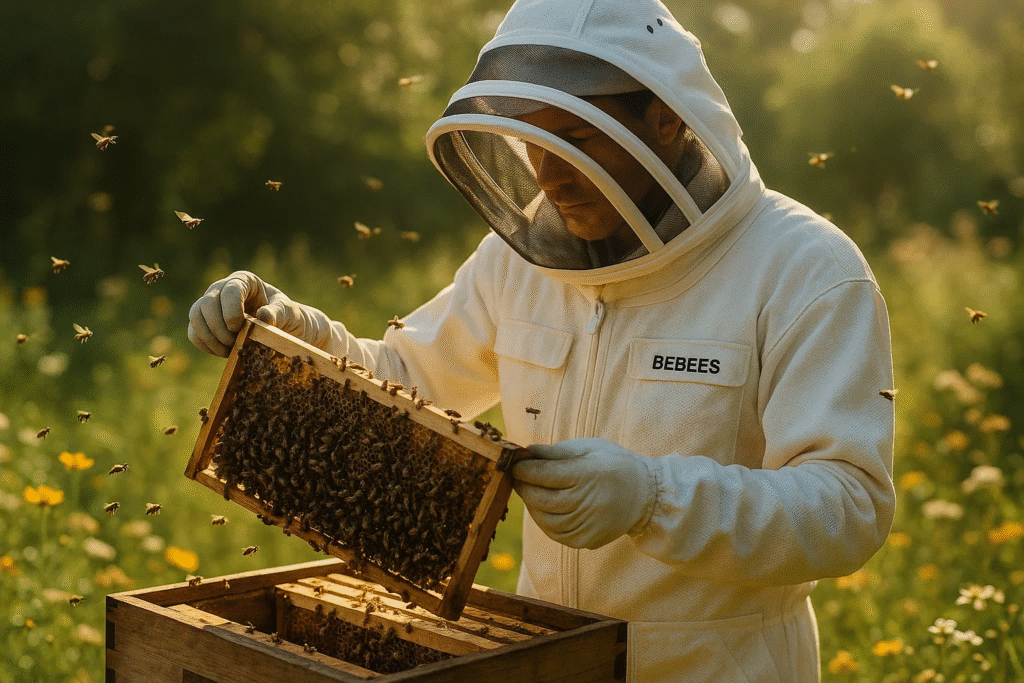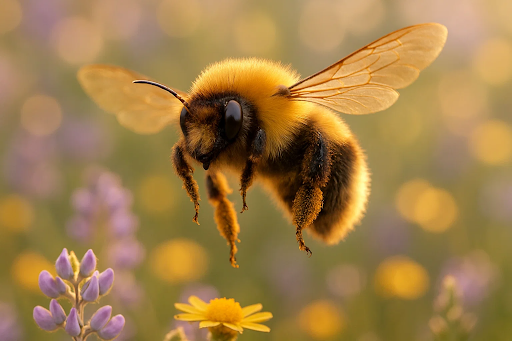Bumble bees are nature’s quiet workers — fuzzy, chubby, and endlessly fascinating. Their low humming sound often means spring is here and pollination is in full swing. But when a particularly large bee buzzes close, many people panic.
The big question is — do big bumble bees sting, and if yes, how dangerous are they?
The answer: yes, they can sting — but only in rare situations. Let’s uncover the truth about their stinging behavior, why size doesn’t mean danger, and how to stay safe around them.
Do Big Bumble Bees Sting?
Yes, big bumble bees do sting, but they are far from aggressive. In fact, bumble bees — big or small — are among the gentlest pollinators on Earth.
Unlike honey bees that sting once and die, bumble bees have smooth stingers, which means they can sting multiple times without harming themselves. But here’s the twist: they rarely ever do.
They’ll only sting if they feel their nest is threatened or they are physically handled.
Their behavior is mostly defensive, not offensive. If you remain calm and give them space, you’ll never have a problem.
If you’d like a full scientific explanation of their sting biology and behavior, you can read our detailed breakdown in Bumble Bee Sting Behavior and Safety Measures — where we explore the anatomy of their stingers and how to treat stings properly.
Why Big Bumble Bees Look Scarier (But Aren’t)
Large bumble bees — usually queens or worker bees — appear intimidating because of their size and deep buzzing.
But their size is for function, not aggression.
- Queens: Bigger because they store fat reserves for winter hibernation and reproduction.
- Workers: Slightly smaller but still larger than most insects, built for carrying heavy pollen loads.
Their bulk makes them better at buzz pollination — vibrating flowers to release pollen from crops like tomatoes, peppers, and blueberries.
So the next time you see a big fuzzy bee near your plants, remember — it’s not a threat, it’s an ally.
The Science of a Bumble Bee Sting
When a bumble bee stings, it injects a small dose of venom containing mild proteins that affect your skin and immune system.
Here’s what happens next:
- Pain: Sharp for a few seconds, then dull.
- Redness & Swelling: Localized around the sting area.
- Recovery: Usually within 2–6 hours.
Bumble bee venom isn’t as potent as that of hornets or wasps. Most people experience mild symptoms, while allergic individuals may require immediate care.
And unlike honey bees, bumble bees don’t die after stinging — their stinger is smooth, allowing them to sting again if absolutely necessary.

What to Do If a Bumble Bee Stings You
If you accidentally get stung, stay calm — most stings are mild and easy to treat at home.
Here’s what you should do:
- Clean the area: Wash with soap and water.
- Apply a cold compress: Use ice for 10–15 minutes to ease swelling.
- Use an anti-itch cream: Hydrocortisone or antihistamine creams reduce redness.
- Watch for allergy signs: Shortness of breath, dizziness, or swelling needs urgent care.
Usually, the pain fades within a few hours, and there’s no need for medical attention unless you’re allergic.
Safety Tips to Avoid Bumble Bee Stings
Preventing stings is easier than you think. Bumble bees only react defensively, so your behavior matters more than theirs.
Follow these tips:
- Don’t disturb their nests. Most bumble bees nest in the ground or compost piles.
- Avoid bright, floral patterns that attract them.
- Move slowly if one comes near — swatting provokes them.
- Skip perfumes and scented lotions when gardening.
- If you’re handling hives or working close to bees, wear proper protective gear.
For professional or hobbyist beekeepers, Bebees protective suits and gloves are designed for maximum comfort and sting protection during hive inspections and fieldwork. They’re lightweight, breathable, and tested for safety — perfect for U.S. beekeepers who want peace of mind.
Do Big Bumble Bees Bite or Sting?
Many people confuse bee bites with stings.
Bumble bees do not bite humans.
Their mandibles (jaw parts) are used to cut plant material and shape wax, not to bite defensively.
So if you ever feel pain from a bee encounter, it’s from a sting, not a bite.
Do Bumble Bees Die When They Sting?
This is one of the most common misconceptions.
Honey bees die after stinging because their barbed stinger gets stuck in human skin. Bumble bees, however, survive their stings — their stinger is smooth and retractable.
This allows them to sting multiple times — but they typically don’t unless extremely provoked. Their goal is self-defense, not aggression.

The Importance of Bumble Bees in Nature
While people fear their sting, bumble bees are critical to global pollination.
They’re among the few insects capable of buzz pollination, shaking pollen loose from certain plants that honey bees can’t pollinate.
They’re responsible for the growth of:
- Strawberries
- Blueberries
- Tomatoes
- Squash
- Peppers
Without them, fruit yields and plant diversity would decline drastically.
Protecting bumble bees means protecting our food systems.
How to Create a Bumble Bee-Friendly Garden
If you want to help bumble bees thrive (and reduce the chance of them stinging you), build a garden they’ll love.
Try this:
- Plant native flowers like lavender, foxglove, and wildflowers.
- Avoid pesticides and insecticides.
- Leave small wild areas or logs for nesting.
- Keep a shallow dish of water with pebbles for hydration.
Creating a pollinator-friendly space not only supports bees but also boosts your garden’s productivity.
Why Bumble Bees Rarely Attack Humans
Bumble bees have no reason to attack unless their nest is disturbed. They don’t have the aggressive instincts of wasps or hornets.
When they buzz around you, they’re likely exploring scents or colors, not preparing to sting.
As long as you remain calm and don’t swat, bumble bees will quickly lose interest and move on.
Final Thoughts
So, do big bumble bees sting?
Yes, but only when they absolutely must.
These gentle pollinators are peaceful, intelligent, and vital to our environment. Their size might look intimidating, but in reality, they’re among the most helpful insects we have.
By staying calm, avoiding sudden movements, and wearing proper protective gear when needed, you can enjoy their presence safely.
To learn more about how bumble bees sting, the science behind their stingers, and best safety practices, explore our detailed post on bumble bee sting behavior and safety — a complete guide for both beginners and expert beekeepers.
Let’s stop fearing bees and start protecting them — because without bumble bees, the world would lose much more than just honey.






